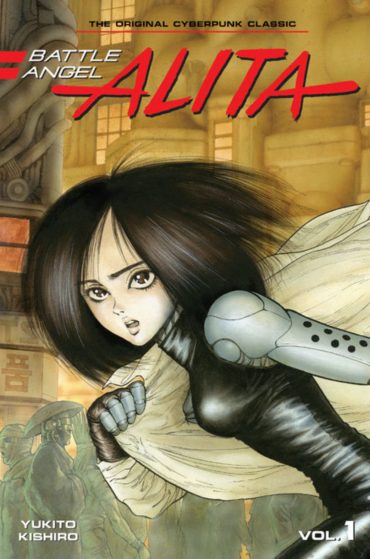Battle Angel Alita Volume One (Paperback Edition) Review
Battle Angel Alita is in a strange place in the world of manga. In comparison to other cyberpunk series in the medium, it isn’t as famous as say Akira and Ghost in the Shell, but it is certainly a well respected title, and like GitS, was subject to a controversial Hollywood adaptation – that’s “controversial” in the sense that any manga adapted by Hollywood is always going to be controversial. No matter how good it is, Hollywood touching a manga is always going to be suspect.
Regardless, this series has been out in English in various forms: first published by VIZ Media, it is now released by Kodansha, who are bringing out this nine-volume-long series in a collection of six books. Thus, each of these paperback editions is 1.5 volumes long. You would think that it would make more sense to release it in three books, each three volumes’ long, rather than split everything up, but this is not the only issue with regards to the way this version has been released.
Before getting into that however, let’s get into the story. The series is set in The Scrapyard, a gigantic slum area below the wondrous space-city of Zalem. A cyber doctor called Daisuke Ido discovers the remains of a cyborg which he takes back to his lab and fixes. He calls the cyborg Alita, but when she awakens, it appears she has no memory.
Later, Alita overhears Ido having a conversation and mistakenly thinks he is a killer preying on a young woman. She follows him, but comes to discover that Ido is actually a Hunter-Warrior – a bounty hunter – and the woman he is after is a mutant serial killer. Alita is able to defeat the killer herself using an advanced martial art, which Ido recognises as the art called “Panzerkunst”. Following this, Alita decides to become a Hunter-Warrior herself, bringing in bounties while also on a mission to track down her missing memories.
It is hard to tell how the story is developing in this opening volume. Probably the best thing in this manga is Yukito Kishiro’s artwork. His varied character designs are deeply engrossing, with Alita’s own slender form standing in stark contrast to some of the gigantic and violent brutes she battles against. One of the best moments is a scene in a sewer, where after Alita falls into it, she dries off by shaking herself like a dog, a nice humorous detail which pops up among the more frenzied action sequences.
There are some elements of Kodansha’s production that I do like, such as Scott O. Brown and Evan Hayden’s use of lettering. The use of a more computerised font for most machines does bring up questions regarding Alita who uses the font that is also used by human characters, and given that she is a cyborg, that would mean there is a likelihood that part of her is in some way human.
Other parts of the production I’m less keen on. Aside from dividing the books into 1.5-volume chunks, another issue I have with Kodansha’s release is how they use translation notes. Most of them are tiny pieces of text stuck between the space in panels, some written horizontally but others vertically. Many of these notes however appear to relate to pieces of technology specific to the series rather than just general translation. Also, I feel these notes would work better in a separate translation notes section rather than as small footnotes.
What makes this weirder however is that there is an actual translation notes section, but it is just one page long, and it mainly talks about how the series and lead character have different names compared to the Japanese translation. Battle Angel Alita’s original name is Gunnm, and Alita is actually called Gally. The notes explain that when VIZ first released the series in English, these translations were added to give the series more appeal to English-speaking audiences, and that they are used in this edition because this translation is what the audience is used to.
Issues of production aside, Battle Angel Alita still remains one of the key works in cyberpunk manga. It is not the most famous, but it is still one that those interested in the genre should read.


